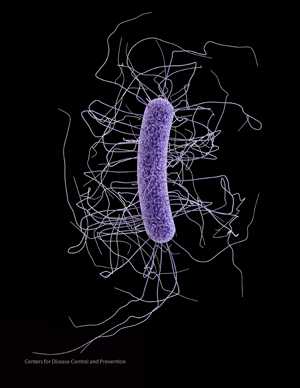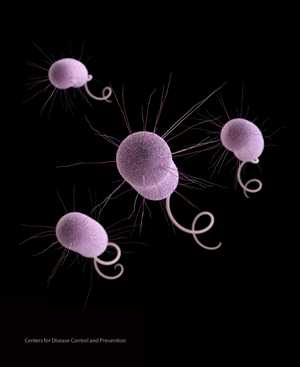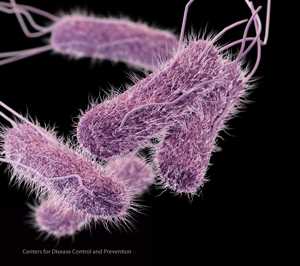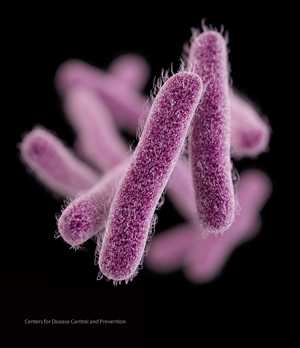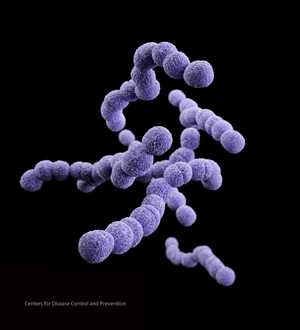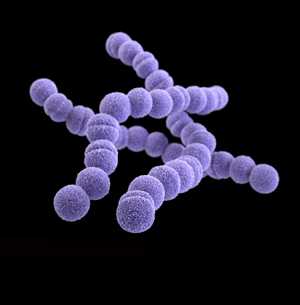Newsroom Image Library - Disease Agents
Viruses/Bacteria and Scientists
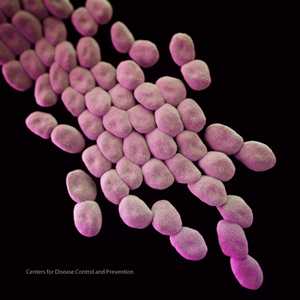
Description:
Medical illustration of Acinetobacter.
Download high-resolution image
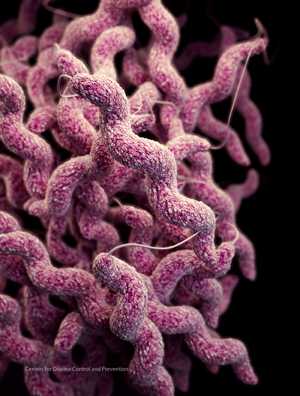
Description:
Medical illustration of Campylobacter.
Download high-resolution image
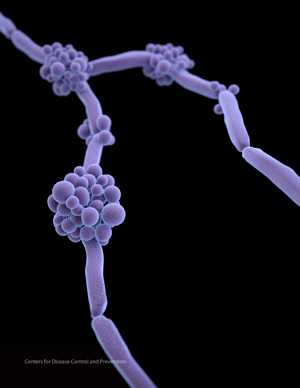
Description:
Medical illustration of Candida.
Download high-resolution image
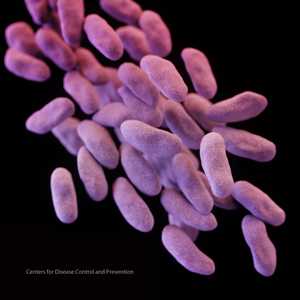
Description:
Medical illustration of carbapenem-resistant Enterobacteriaceae.
Download high-resolution image

Description:
Medical illustration of Enterococcus.
Download high-resolution image
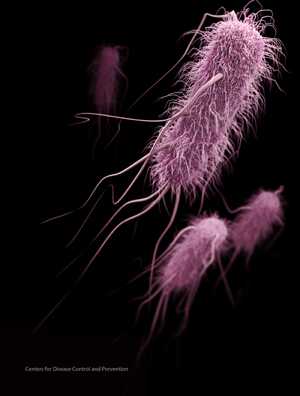
Description:
Medical illustration of carbapenem-resistant Enterobacteriaceae.
Download high-resolution image
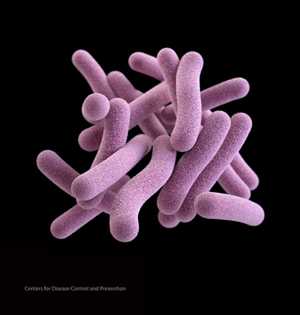
Description:
Medical illustration of tuberculosis.
Download high-resolution image
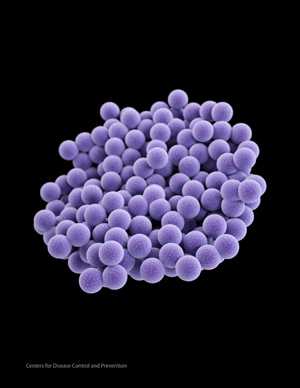
Description:
Medical illustration of methicillin-resistant Staphylococcus aureus.
Download high-resolution image
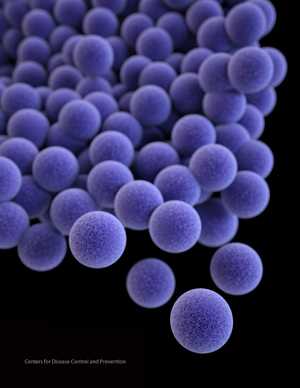
Description:
Medical illustration of methicillin-resistant Staphylococcus aureus.
Download high-resolution image
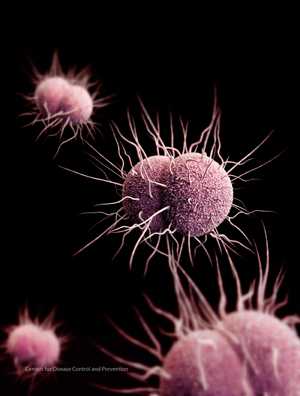
Description:
Medical illustration of Neisseria gonorrhoeae.
Download high-resolution image
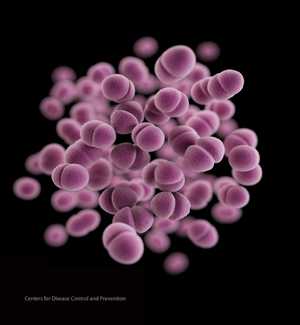
Description:
Medical illustration of Neisseria gonorrhoeae.
Download high-resolution image
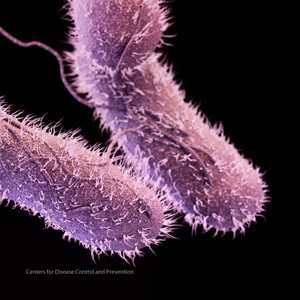
Description:
Medical illustration of non-typhoidal Salmonella.
Download high-resolution image
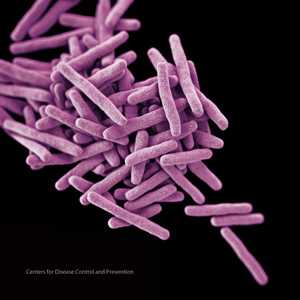
Description:
Medical illustration of tuberculosis.
Download High Resolution
CDC Director Thomas R. Frieden, MD, MPH

Photo Credit: New York City Department of Health
Nancy Cox, Ph.D
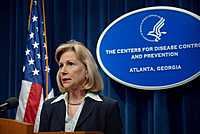
PHIL ID # 11210
Photo Credit: James Gathany, Centers for Disease Control and Prevention
Download High Resolution
Description:
This photograph shows then Influenza Division Director, Nancy Cox, Ph.D., at the podium during a Centers for Disease Control and Prevention (CDC) press briefing held at the outset of the 2009 H1N1 pandemic to give an update in the investigation of cases of novel influenza in California and Texas. CDC issued an MMWR dispatch on Tuesday, April 21, 2009. This briefing updated information included in the dispatch.
Rear Admiral Anne Schuchat, M.D.
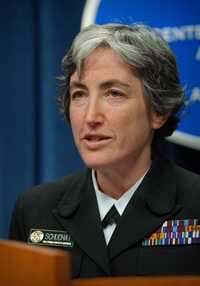
PHIL ID # 11207
Photo Credit: James Gathany, Centers for Disease Control and Prevention
Description:
This 2009 photograph depicts the Interim Deputy Director for Science and Public Health Program, Rear Admiral Anne Schuchat, M.D., at the podium during a Centers for Disease Control (CDC) press briefing held in order to discuss an update in the investigation of cases of swine influenza in California and Texas. CDC issued an MMWR dispatch on Tuesday, April 21, 2009. This briefing updated information included in the dispatch.
CDC Scientist in BSL-4 Lab
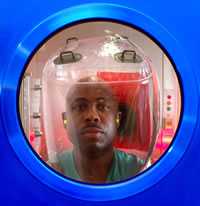
PHIL ID # 10721
Photo Credit: James Gathany, Centers for Disease Control and Prevention
Download High Resolution
Description:
CDC scientist Thomas Stevens peers from inside the autoclave room of the BLS-4 laboratory to the outer corridor.
CDC Scientist in BSL-4 Lab
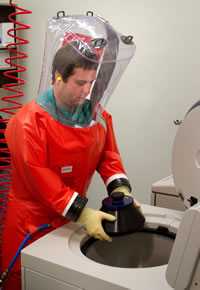
PHIL ID # 10720
Photo Credit: James Gathany, Centers for Disease Control and Prevention
Download High Resolution
Description:
CDC scientist Scott Smith laces a rotor containing tubes of virus particles and cellular debris into a high speed centrifuge.
CDC Scientists working in BSL-4 Lab

PHIL ID # 10723
Photo Credit: James Gathany, Centers for Disease Control and Prevention
Download High Resolution
Description:
CDC scientists connect to a supportive air hose to breathe air and to maintain positive pressure inside the protective, BSL-4 lab suit.
CDC Scientist in BSL-4 Lab
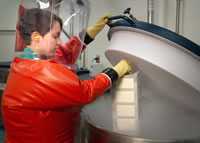
PHIL ID # 10724
Photo Credit: James Gathany, Centers for Disease Control and Prevention
Download High Resolution
Description:
A CDC scientist inserts a rack of boxes containing biological stocks into the liquid nitrogen freezer for storage.
CDC Scientist in BSL-4 Lab
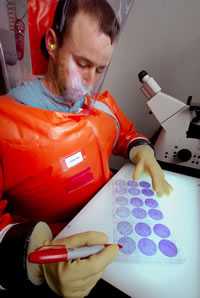
PHIL ID # 10725
Photo Credit: James Gathany, Centers for Disease Control and Prevention
Download High Resolution
Description:
CDC scientist Zach Braden counts viral plaques within fixed monolayers of cells over a light box in order to titrate a viral stock.
CDC Scientist in BSL-4 Lab

PHIL ID # 10726
Photo Credit: James Gathany, Centers for Disease Control and Prevention
Download High Resolution
Description:
CDC scientist Thomas Stevens peers from the chemical decontamination shower to the suit change room.
CDC Scientist in BSL-4 Lab
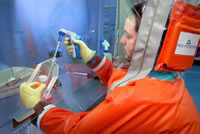
PHIL ID # 10727
Photo Credit: James Gathany, Centers for Disease Control and Prevention
Download High Resolution
Description:
CDC scientist Scott Smith manipulates a flask of cells used for experiments with live virus.
CDC Scientist in BSL-4 Lab
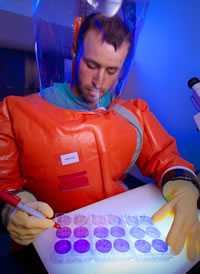
PHIL ID # 10728
Photo Credit: James Gathany, Centers for Disease Control and Prevention
Download High Resolution
Description:
CDC scientist Zach Braden counts viral plaques within fixed monolayers of cells over a light box in order to titrate a viral stock.
CDC scientists examine HIV samples
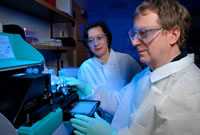
PHIL ID # 10022
Photo Credit: James Gathany, Centers for Disease Control and Prevention
Download High Resolution
Description:
Depicted in this 2007 photograph is CDC microbiologist Dr. Davis Lupo, shown using a luminometer to measure HIV infection of human cells in vitro, while Lee Lam observes. By employing various chemical reactions to the laboratory cell sample, the release of energy, in the form of emitted light, or bioluminescence, is then measured by this luminometer in quantitative units known as RLUs, or “relative light units.” Dr. Lupo and Ms. Lam are National Center for HIV/AIDS, Viral Hepatitis, STD, and TB Prevention (NCHHSTP) staff members, who work inside the center’s Laboratory Branch (LB).
CDC laboratorians working in a BSL-4 Lab

PHIL ID # 6638
Photo Credit: James Gathany, Centers for Disease Control and Prevention
Download High Resolution
Description:
This image depicts two Centers for Disease Control and Prevention laboratorians, Luanne Elliot and Dave Auperin, as they work under a flow hood inside one of the CDC′s BSL-4 (Bio Safety Lab) laboratories. CDC scientists working in the biosafety labs must wear protective clothing and head gear, and are supplied air via overhead lines that plug into the suit. The flow hood pulls air into the experimental area by creating a negative pressure, thereby, preventing pathogens from getting out into the general laboratory environment.
CDC laboratorian working
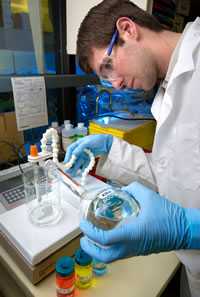
PHIL ID # 7294
Photo Credit: James Gathany, Centers for Disease Control and Prevention
Download High Resolution
Description:
Jason Tully, a CDC laboratorian, is shown here using the pH meter in order to prepare a buffer solution in the Personal Care Products Laboratory (PCPL) located in a CDC lab on the organization′s Chamblee, Georgia campus. The Personal Care Products Laboratory (PCPL) is part of the Organic Analytical Toxicology Branch (OATB) in the Division of Laboratory Sciences (DLS) of the Centers for Disease Control and Prevention (CDC). The Organic Analytical Toxicology Branch conducts research and develops methods for analyzing selected synthetic and naturally occurring organic chemicals and their metabolites, or reaction products in blood or urine.
- Page last reviewed: September 7, 2017
- Page last updated: September 7, 2017
- Content source:



 ShareCompartir
ShareCompartir

